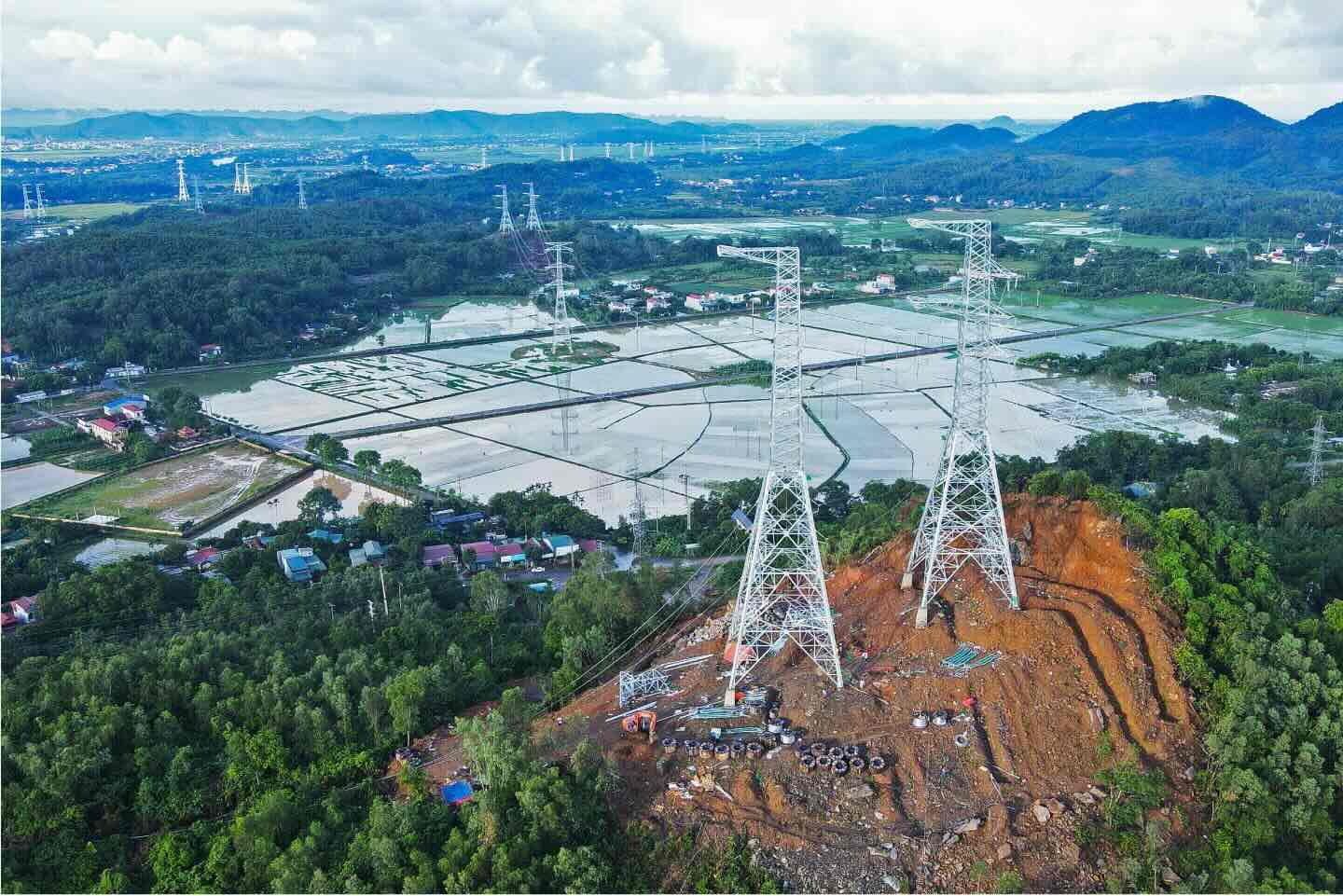In recent times, many new factors have appeared affecting the demand for electricity consumption and the orientation for developing power sources, such as: Continuing to implement the investment policy of Ninh Thuan Nuclear Power Project; the socio-economic development target by 2030 is much higher than before (in 2025 strive to reach over 8% and in the 2026-2030 period strive to reach double digits); the international geopolitical situation continues to develop complicatedly; rapid development of science and technology...
In that situation, the Prime Minister assigned the Ministry of Industry and Trade to adjust the VIII Power Plan to meet the double-digit GDP growth target in the coming period.
To ensure electricity supply in the coming years with the goal of double-digit economic growth, it is necessary to review and evaluate the development capacity of power sources, adjust the structure of special power sources in the period up to 2030, in which priority is given to developing power sources with a quick implementation time to promptly meet load needs, especially in the Northern region.
On that basis, the Prime Minister assigned the Ministry of Industry and Trade to organize the preparation of the Adjustment of the VIII Power Plan in Decision No. 1710/QD-TTg dated December 31, 2024.
In order to carry out the assigned tasks, the Ministry of Industry and Trade has coordinated with ministries, branches and localities to develop a project to Adjust the VIII Power Plan in accordance with the provisions of the law on electricity and planning, and submit it to the Prime Minister for approval in Decision No. 768/QD-TTg dated April 15, 2025.
In particular, it has been calculated to determine the power source structure to ensure the requirements for solving 3 goals: (i) Meeting domestic demand, (ii) Serving the direct power purchase and sale mechanism (DPPA), (iii) Serving development for export under contracts.
The results of the calculation of the electricity load forecast are implemented with 3 options corresponding to 3 GDP growth scenarios. The growth rate of commercial electricity in the basic load plan for the period 2026-2030 is 10.3%/year (equivalent to Vietnam's average GDP growth of about 8.0%/year in this period) and the high load plan of 12.5%/year (equivalent to GDP growth of 10.0%/year) ensures enough electricity for socio-economic development of our country.

The power development program in the VIII Electricity Planning Adjustment ensures compliance with the world's development trend, meets domestic electricity demand, is ready for export and aims to neutralize carbon by 2050.
Thus, domestic resources will be able to maximize their potential, significantly limiting dependence on foreign countries, aiming to exploit renewable energy sources in areas with great potential, in accordance with the characteristics of power system operation, load development, ensuring sufficient electricity supply for socio-economic development at double digits and having a reserve level to develop industrial data centers and national data centers in the future.
According to the calculation in the adjustment of VIII electricity planning, by 2030, the total capacity of power plants to serve domestic needs (excluding exports) reached 183,291-236,363 MW (2.5-3 times higher than the current power source, increasing 27,747-80,819 MW compared to the approved VIII electrical planning), of which: (i) Total power sources (total power source of 97.734-103.17 MW) Coal power 31,055 MW (accounting for 13.1-16.9%); Domestic gas thermal power 10,861-14,930 MW (accounting for 5.9-6.3%); Thermal power of 22,524 MW (accounting for 9.5-12.3%); Hydropower 33,294-34,667 MW (accounting for 14.7-18.2%); (ii) Renewable power source, mainly wind and solar power (total capacity of 78,525-117,445 MW): wind power on the shore and near the shore 26,066-38,029 MW (accounting for 14.2-16.1%); Offshore wind power 6,000 MW (accounting for 2.5-3.2%); Solar power (including concentrated solar power and roof solar power) 46,459-73,416 MW (accounting for 25.3-31.1%).
To ensure the progress of power projects put into operation according to the approved plan, meet the growth needs to serve the country's socio-economic development and effectively implement the set goals, the Adjustment of Power Plan VIII has also proposed a number of solutions, including:
(1) Continue to improve mechanisms and policies to create an open corridor for the implementation and implementation of power projects.
(2) Regularly urge localities to support and create conditions for investors to implement projects in the area, ensuring the set progress.
(3) Solutions to create capital and mobilize investment capital to develop the electricity industry, especially diversifying capital sources, forms of capital mobilization (bank credit capital, aid capital, stock market, etc.), effectively attracting domestic and foreign capital sources; encouraging economic sectors to participate in investing in the electricity industry.
(4) Propose that competent authorities resolutely remove obstacles caused by inspection conclusions, in order to soon put power projects into operation, ensuring power supply for the country's socio-economic development and the daily needs of the people.
(5) Corporations and Corporations speed up the construction progress, completing assigned power source projects and transmission grid (especially inter-regional and regional transmission).
(6) Investors of power plants strengthen the monitoring and closely supervision of the operation of plant equipment; proactively coordinate effectively with primary fuel suppliers ( Coal, gas - including LNG and oil) to develop and implement a plan to arrange stable and continuous fuel supply throughout the plant operation; absolutely comply with the regulation order of the regulation agency to meet the needs of the power system.











